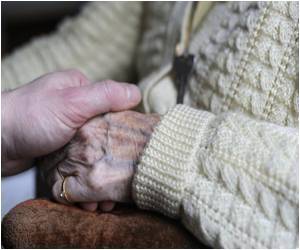
Active Design Supplement: Promoting Safety serves as a companion to the original The Active Design Guidelines: Promoting Physical Activity and Health in Design, published in 2010 by the New York City departments of Health & Mental Hygiene, Design and Construction, Transportation and City Planning to help professionals working in urban and building design to promote active environments. This new publication identifies injury prevention strategies that align with Active Design Guidelines. Topics addressed include playground equipment and surfaces, complete streets, crime prevention through environmental design, and stair safety features such as good lighting.
"Communities across the U.S. have begun to change their built environments to increase physical activity and reduce obesity," said report co-author Keshia Pollack, PhD, MPH, an associate professor with the Johns Hopkins Center for Injury Research and Policy, part of the Johns Hopkins Bloomberg School of Public Health. "Now, the designers and architects involved in these projects have an additional resource to help them further incorporate injury prevention into their work."
Drawing on existing studies and evidence-based best practices for maximizing safety, the publication's authors identified complementary strategies to promote active living and injury prevention, including 18 strategies for urban design and 9 strategies for building design. These strategies can be applied to create health-enhancing built environments that also help to reduce the risk of intentional and unintentional injuries.
"Injury is the leading cause of death for Americans ages 1-44 and affects people at home, at work, at school, on the road and during play," said co-author Andrea Gielen, ScD, ScM, director of the Johns Hopkins Center for Injury Research and Policy. "As characteristics of the built environment can affect the risk of injury, it's critical that the fields of injury prevention and active living continue to collaborate so that safety can be considered from the onset of planning and design."
For example, when planning trails and paths for pedestrians and bicyclists, designers should consider how older adults, people with physical limitations, families with strollers, and bicyclists can all safely use the space. Signage and pavement markings can be useful to maximize safety in such circumstances. In addition, separating each of these various road users, especially pedestrians and cyclists from cars as well as pedestrians from bicyclists, is an effective design strategy for maximizing safety. Opportunities for rooftop gardens and play spaces should also include structures that prevent the risk of falls, especially among children.
Advertisement
Another key takeaway of the report is that multiple active design strategies can often be enhanced simultaneously by a single injury prevention strategy; for example, improved timing of traffic signals can benefit pedestrians, bicyclists, and transit users.
Advertisement
The multidisciplinary collaboration of the publication's authors, representing multiple sectors of local government, an academic injury research center, and a nonprofit professional organization, is yet another example of how collective expertise and efforts are essential to promote both active living and safety.
"Health education specialists work to educate children and adults about the need to be physically active and avoid injury," noted Elaine Auld, MPH, MCHES, chief executive officer of SOPHE and a contributing editor to the report. "We also realize multiple partners and strategies are needed to accomplish our health goals. We are grateful to the U.S. Centers for Disease Control and Prevention's Division of Unintentional Injury Prevention and Control for supporting the development and dissemination of this publication."
Source-Eurekalert









